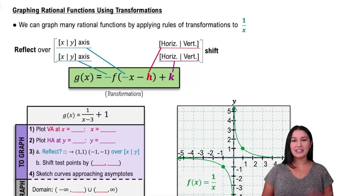Here are the essential concepts you must grasp in order to answer the question correctly.
Exponential Functions
Exponential functions are mathematical expressions in the form f(x) = a^x, where 'a' is a positive constant. In this case, f(x) = (0.6)^x represents a decreasing exponential function because the base (0.6) is less than 1. Understanding the behavior of exponential functions is crucial for predicting how they grow or decay as 'x' changes.
Recommended video:
Graphing Functions
Graphing functions involves plotting points on a coordinate plane to visualize the relationship between the input (x) and output (f(x)). For the function f(x) = (0.6)^x, creating a table of coordinates helps identify key points, such as f(0) = 1 and f(1) = 0.6, which are essential for accurately sketching the graph.
Recommended video:
Graphs of Logarithmic Functions
Using Graphing Utilities
Graphing utilities, such as graphing calculators or software, provide a powerful way to visualize functions quickly and accurately. They can confirm the hand-drawn graph by generating a precise representation of the function. Utilizing these tools can help students verify their work and understand the function's behavior more deeply.
Recommended video:
Graphing Rational Functions Using Transformations
 Verified step by step guidance
Verified step by step guidance Verified video answer for a similar problem:
Verified video answer for a similar problem:



 6:13m
6:13m